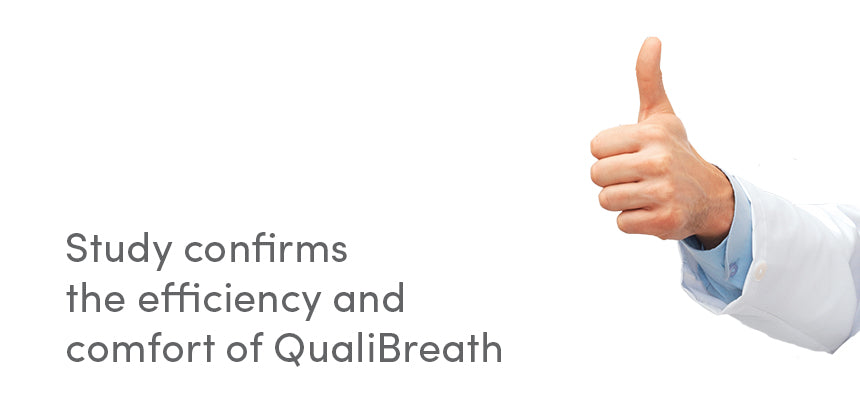
QualiBreath - Sternum and thorax support
QualiBreath decreases the sternal gap in patients with an unstable sternum, and improves their discomfort, pain, feeling of support, ease of breathing and their ability to function!
This is the conclusion in a study from Australia by Doa El-Ansary et al., where they compared the QualiBreath sternum support, called “Adjustable Fastening Brace” in the article, to an elastic compression binder, and sports tape - used to control sternal instability.
Control of Separation in Sternal Instability by Supportive Devices:
A Comparison of an Adjustable Fastening Brace, Compression Garment, and Sports Tape
Doa El-Ansary, PhD, Gordon Waddington, PhD, Roger Adams, PhD.
Arch Phys Med Rehabil 2008;89:1775-81.
You can find the full article here:
http://www.archives-pmr.org/article/S0003-9993(08)00399-7/fulltext
The authors wrote: “The wearing of a brace [QualiBreath] may counter the lateral forces that result from rises in intra-thoracic pressures on coughing and the torsional forces that result from mobilization, upper-limb movements, and mobility transfers.”
The authors also had this to say about external chest support devices:
“….supportive devices have been reportedly designed to reduce sternal pain, prevent wound breakdown and sternal instability.” …and ….. “The rationale for the use of these devices is that they provide circumferential support and resistance to increases in intra-thoracic pressure that may result in distractive forces on the sternum during activities of daily living. They may also act to complement the parasternal muscles (intercostals, sternalis, transverse thoracis) and muscles of the anterior abdominal wall, which are thought to play a role in the stabilization of the thoracic cage.”
El-Ansary et al. evaluated the effects of upper limb exercises on sternal separation in patients with sternal instability while wearing either QualiBreath, sports tape, an elastic compression binder or no support at all. The sternal separation was measured using ultrasound.
Routine active range of shoulder motion exercises, typically used by physiotherapists for patients after cardiac surgery, were used, as well as unilateral arm elevation with and without a weight, and bilateral arm elevation with and without a weight.
Also, two functional tasks were evaluated: pushing up from a chair, and flexion at the elbow against an elasticised rubber band with a low to moderate resistance performed unilaterally and bilaterally.
Furthermore, in the resting period following the performance of exercises for each mode of intervention, patients were asked to rate comfort, pain, feeling of support, ease of upper-limb movement, and ease of breathing.
QualiBreath (Adjustable Fastening Brace) showed the best results in all measurements.
Here is what the authors said:
“Results from the implementation of a set of supportive devices for patients with chronic sternal instability consistently favored the use of an adjustable fastening brace [QualiBreath], which reduced the amount of sternal separation by one fifth. Measures tended to improve with the amount of support offered by the device [QualiBreath]."
Patients' ratings on the ability to perform arm activities, discomfort, pain, feeling of support, and ease of breathing also consistently gave the best results to QualiBreath.
Furthermore, almost all patients said they would have elected to use a brace immediately after surgery.
The authors suggested a new study be conducted with QualiBreath used directly after surgery, and said:
“The positive findings here regarding the effects of supportive devices on reported pain and ease of performance of everyday functional tasks in patients with sternal instability suggest that future studies should examine the use of supportive devices in the period immediately after cardiac surgery for their effect on both pain and sternal integrity.”


QualiBreath gives a constant encircling support to the chest
while leaving the lower lung lobes and upper abdomen free for breathing and comfort.
Logic says: If QualiBreath is shown to decrease the sternal gap in patients with an unstable sternum, and improve their discomfort, pain, feeling of support, ease of breathing and their ability to function, then the probability for QualiBreath to do the same for patients immediately after cardiac surgery is very high.
What do you think ?


Leave a comment: